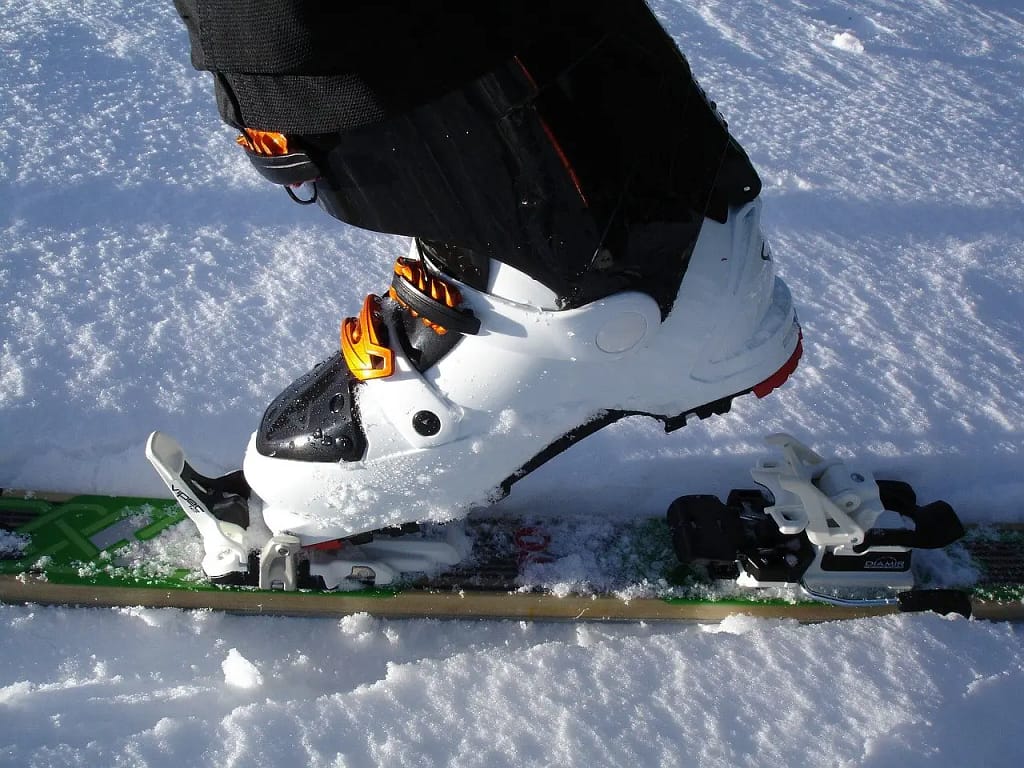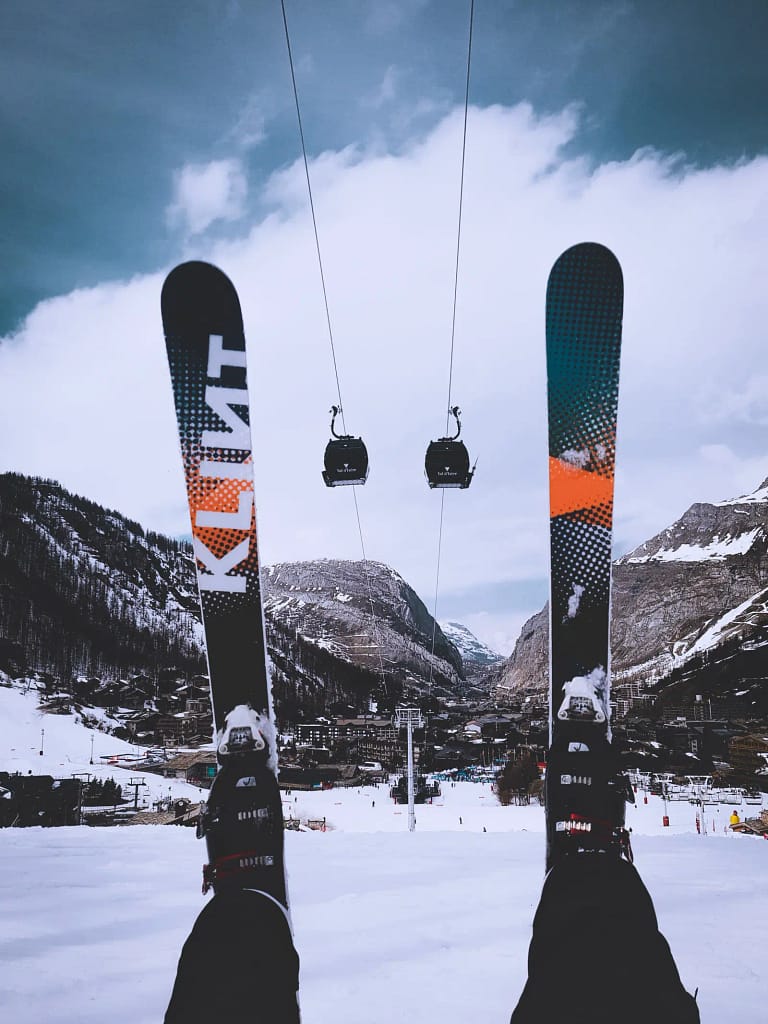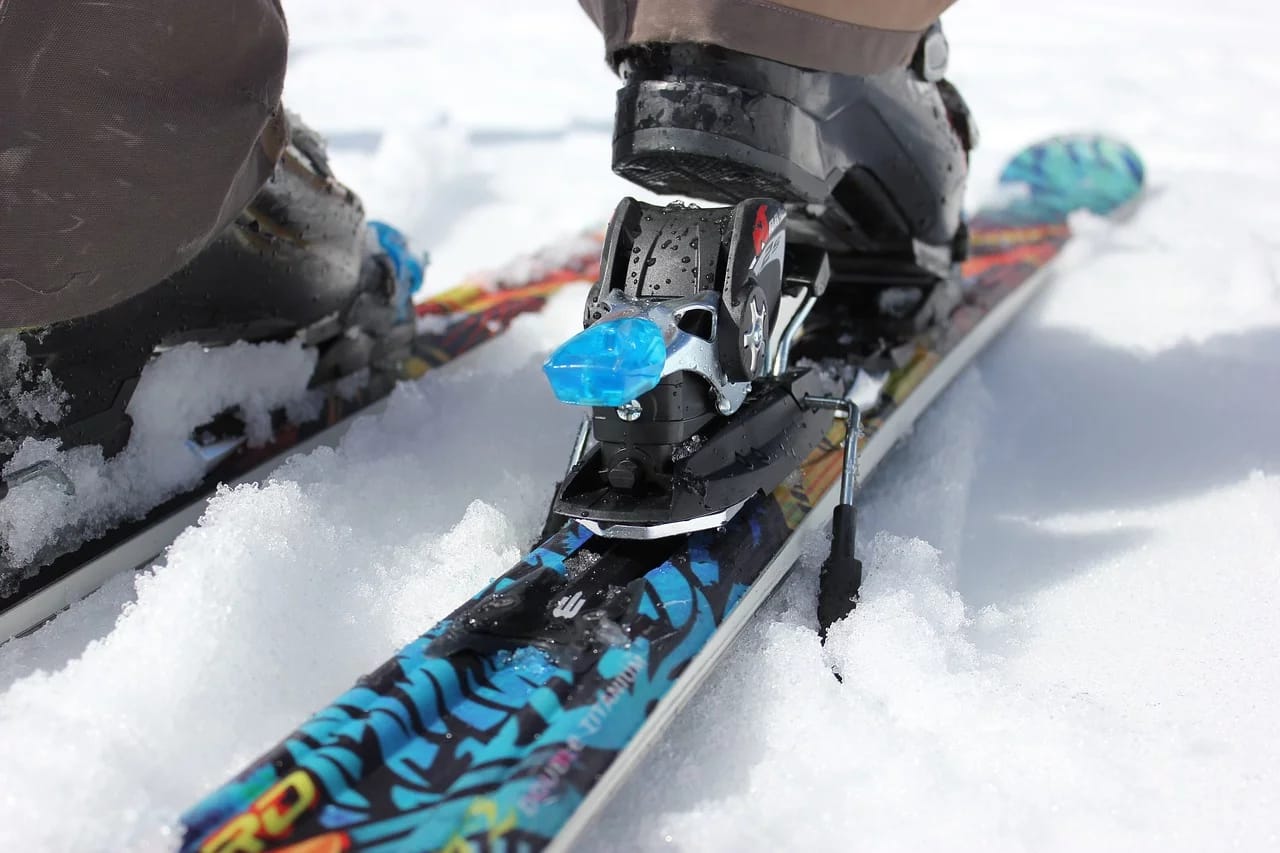Table of Contents
Introduction to Choosing Ski Bindings
Embarking on the slopes requires not just skill and nerve, but also the right gear. At the heart of this gear are your ski bindings, the critical link between your boots and skis. The right ski bindings not only enhance your performance but are pivotal for your safety. Let’s delve into why choosing the perfect pair is not something to be taken lightly.
The Role and Importance of Ski Bindings
Have you ever wondered what keeps you attached to your skis while carving down the slopes? Enter the unsung hero of your ski equipment: ski bindings. These critical components play a pivotal role in your safety and performance on the mountain. Let’s dive into how they work and why they’re so crucial.
How Ski Bindings Work
Imagine ski bindings as the middleman between your boots and skis. They’re designed to hold you firmly in place as you navigate the terrain, but here’s the kicker – they also know when to let go. When you take a tumble, your bindings gauge the force and, if it exceeds a safe threshold, they release your boots to prevent injury. It’s a delicate balance between a secure grip and a timely release, which is why choosing the right bindings is paramount.
The Safety Aspect of Ski Bindings
When it comes to skiing, safety is not just about wearing a helmet. Your bindings are your first line of defense against knee, ankle, and leg injuries. They are engineered to detect the difference between forces from a typical ski maneuver and those from a potential fall. If your bindings are too tight, they won’t release when needed, putting you at risk of serious injury. Conversely, if they’re too loose, they could release prematurely, leading to a loss of control. This is why having the right ski bindings, adjusted to your specific needs, is as important as choosing the right ski slope for your skill level.
Now, you might be thinking, “How do I ensure my bindings are set up correctly?” That’s where the expertise of a professional comes in. They can adjust your bindings based on your weight, skill level, and skiing style, ensuring a safer ride down the slopes. Remember, the right settings can make all the difference between a thrilling day on the mountain and an unwanted trip to the emergency room.
Understanding the Ski Bindings Size Chart
Ever found yourself scratching your head, staring at a ski bindings size chart, wondering what all those numbers mean? Fret not, fellow skier, for you’re about to crack the code. A ski bindings size chart isn’t just a jumble of figures; it’s the roadmap to your perfect match in the ski world. Let’s dive in and decode the mysteries of the ski bindings size chart together.
| Skier’s Weight (lbs) | Boot Sole Length (mm) | Binding Size | Recommended DIN Setting | Skier Type |
| Under 100 | 250 – 270 | Small | 0.75 – 4.5 | Beginner |
| 271 – 290 | Small | 1.0 – 5.0 | Intermediate | |
| 100 – 150 | 291 – 310 | Medium | 2.5 – 5.5 | Beginner |
| 311 – 330 | Medium | 3.0 – 6.0 | Intermediate | |
| 331 – 350 | Medium | 3.5 – 6.5 | Advanced | |
| 151 – 200 | 351 – 370 | Large | 4.0 – 7.0 | Beginner |
| 371 – 390 | Large | 4.5 – 7.5 | Intermediate | |
| 391 – 410 | Large | 5.0 – 8.0 | Advanced | |
| Over 200 | 411 – 430 | Extra Large | 5.5 – 8.5 | Intermediate |
| 431 – 450 | Extra Large | 6.0 – 9.0 | Advanced |
DIN Setting: This is a scale that adjusts how easily the ski bindings will release during a fall. Lower numbers release easier, suitable for beginners or lightweight skiers; higher numbers are for advanced skiers or those with more weight.
Skier Type:Beginner: New to the sport or skiing cautiously.
Intermediate: Comfortable with moderate slopes and speeds.
Advanced: Skis aggressively and prefers steeper and more challenging terrain.
Interpreting the Ski Bindings Size Chart
At first glance, a ski bindings size chart may seem like a cryptic puzzle. However, it’s actually your best pal when it comes to finding the ideal bindings. The chart typically lists boot sole lengths in millimeters, which correspond to the binding size you’ll need. Think of it as the “shoe size” for your ski boots. But remember, the right fit isn’t just about size; it’s about precision. A snug fit ensures your boots and bindings communicate like old friends, ensuring a seamless skiing experience.
How to Use the Ski Bindings Size Chart for Selection
Using the size chart is as simple as matching your boot’s sole length to the corresponding binding size. But don’t just take a wild guess at your boot’s size. Measure it, or better yet, consult with a professional. Once you have your magic number, find it on the chart, and voilà, you’re one step closer to the bindings that will serve you best. It’s like finding the missing piece in a puzzle – immensely satisfying.
Remember, the ski bindings size chart is a starting point. It’s essential to consider other factors such as your weight, skiing style, and ability level. And, of course, always ensure that your bindings are compatible with your ski boots. It’s a partnership, after all, and every successful partnership relies on compatibility.
The Different Types of Ski Bindings
Strapping into the right ski bindings can be the difference between a good day on the slopes and a great one. But with the myriad of options available, how do you choose the perfect companion for your ski boots? Let’s dive into the world of ski bindings and discover the types that could elevate your skiing experience to new heights.
Alpine Ski Bindings
Alpine ski bindings are the go-to for downhill skiing enthusiasts. Designed for precision and control, these bindings are all about keeping you securely attached to your skis during those high-speed runs and sharp turns. They come equipped with a release mechanism that’s crucial for safety, detaching the boot during a fall to minimize the risk of injury. Did you know? The majority of recreational skiers opt for alpine bindings, making them a staple on the slopes.
Telemark Ski Bindings
For those who revel in the nostalgia of skiing, Telemark ski bindings offer a unique blend of tradition and challenge. These bindings are distinguished by their free heel design, allowing skiers to execute the graceful Telemark turn. It’s a style that requires skill and balance, and while it may not be everyone’s cup of tea, it certainly has a dedicated following. If you’re looking to stand out and enjoy an old-school skiing technique, Telemark bindings might just be your perfect match.
Touring Ski Bindings
Are you the type who seeks the serenity of untouched snow away from the bustling ski resorts? Then touring ski bindings are your gateway to adventure. Designed for both uphill mobility and downhill stability, these bindings are a hybrid marvel. They allow you to lift your heel on the ascent, akin to hiking, and then lock it down when it’s time to descend. With the rise of backcountry skiing, touring bindings have seen a surge in popularity, offering skiers the best of both worlds.

Factors to Consider when Choosing Ski Bindings
Zeroing in on the perfect ski bindings can feel like navigating through a blizzard of options. But fear not, intrepid skier! With a few key considerations in mind, you’ll be carving down slopes with bindings that feel like they were made just for you. Let’s delve into the factors that will guide your selection to ensure your ski days are filled with joy, not woes.
Skiing Style and Terrain
Are you the type to gracefully glide on groomed runs or do you crave the adrenaline rush of off-piste adventures? Your skiing style and preferred terrain are pivotal in selecting bindings. Alpine bindings, with their robust construction, are the go-to for resort skiing. However, if you’re all about the backcountry, touring bindings that offer both uphill mobility and downhill performance are your best bet. It’s like choosing a dance partner – the right match will help you move with precision and grace.
Boot Compatibility
Imagine trying to fit a square peg into a round hole – that’s what incompatible boots and bindings feel like. Boot compatibility is non-negotiable. Your bindings must match your boot type and sole norm, whether it’s alpine, touring, or a hybrid. It’s a relationship that must click, quite literally. Check the manufacturer’s specifications or consult with a ski professional to ensure a match made on the mountain.
Skier Weight and Height
Bindings aren’t one-size-fits-all. Your weight and height play a crucial role in determining the binding’s release settings, known as the DIN range. This is where safety intersects with performance. A binding that’s too loose could eject you prematurely, while one that’s too tight might not release when needed, increasing injury risk. It’s a delicate balance, akin to finding the right tension in a guitar string for the perfect note. Refer to a DIN chart or seek expert advice to find your sweet spot.

Conclusion: Making the Right Choice in Ski Bindings
As we carve through the crisp narrative of selecting ski bindings, it’s clear that the right choice is pivotal for an elevated skiing experience. Choosing ski bindings isn’t just about snapping into your skis; it’s a crucial decision that can dictate the quality of your ride down the powdery slopes.
Imagine standing atop a snowy ridge, the panorama of alpine splendor before you. Just as you wouldn’t embark on this adventure without a map, venturing without the proper ski bindings is a journey half-prepared. They are your silent guardians, ensuring that every turn, jump, and dash down the mountainside is synchronized with your intentions.
Let’s not forget, the synergy between boot and binding is akin to a dance – each step must be in harmony. The repercussions of mismatched partners? A performance that’s offbeat, potentially leading to a tumble rather than a triumphant finale. Thus, boot compatibility is not just a suggestion; it’s an essential verse in the skier’s anthem.
Whether you’re a novice snow-plower or a slalom expert, the skiing style and terrain you favor whispers clues about the bindings you need. A beginner might seek a binding that promises forgiveness, while the off-piste adventurer requires a steadfast companion that can withstand the rigors of untamed trails.
Remember, the mountain does not discriminate by size or stature, and neither should your bindings. Your weight and height are the scales by which your bindings should be measured, ensuring a tailored fit that’s just right.
In essence, choosing the right ski bindings is a blend of art and science – a decision that’s both personal and pragmatic. As you stand before the mountain, ready to etch your path in the snow, let your bindings be the brush that paints your journey, stroke by sure stroke.
FAQs on How to Choose Ski Bindings
- What are the consequences of choosing the wrong ski bindings?
Choosing the wrong ski bindings can have several consequences. For starters, if the bindings are not the correct size or not properly adjusted, they may not release when they should during a fall, increasing the risk of injury. Conversely, if they’re too loose, they might release prematurely, causing you to lose your skis unexpectedly, which can be both frustrating and dangerous. Additionally, the wrong type of binding may not match your skiing style or ability, hindering your progress and enjoyment on the slopes. It’s like wearing the wrong size shoes for a marathon – uncomfortable and potentially harmful!
- How often should I replace my ski bindings?
Ski bindings don’t have an expiration date, but a good rule of thumb is to consider replacing them every 5 to 7 years, depending on how often you ski and how hard you are on your equipment. Bindings can wear out with use and exposure to the elements, potentially compromising their performance and safety. It’s also wise to get them checked by a professional technician at the start of each season to ensure they’re still functioning correctly.
- Can I use any ski bindings with my ski boots?
Not all ski bindings are compatible with all ski boots. Alpine ski boots and bindings follow a standardized system, but if you’re using boots designed for touring or telemark skiing, you’ll need specific bindings. Always make sure your boots and bindings are compatible – it’s crucial for safety and performance. Think of it as pairing the right wine with your meal; the better the match, the better the experience.
- What is the role of a ski bindings size chart in choosing ski bindings?
A ski bindings size chart is a vital tool to help you select the right bindings for your skis and boots. It provides information on the binding’s brake width and the range of boot sole lengths that the bindings can accommodate. It’s important to ensure that the brake width matches the waist width of your skis and that the bindings can be adjusted to fit the length of your boot soles. It’s a bit like finding the right size of a puzzle piece to fit into your puzzle – it has to be just right.
- Which type of ski bindings is best for beginners?
Beginners should look for alpine ski bindings that are easy to use and provide a reliable release mechanism for safety. Look for a binding with an appropriate DIN setting range that matches your weight and skill level. The DIN setting dictates the force required for the binding to release. It’s important to have these settings adjusted by a professional. Think of it as setting training wheels at the right height – they need to be just right to support you while you learn.





No responses yet